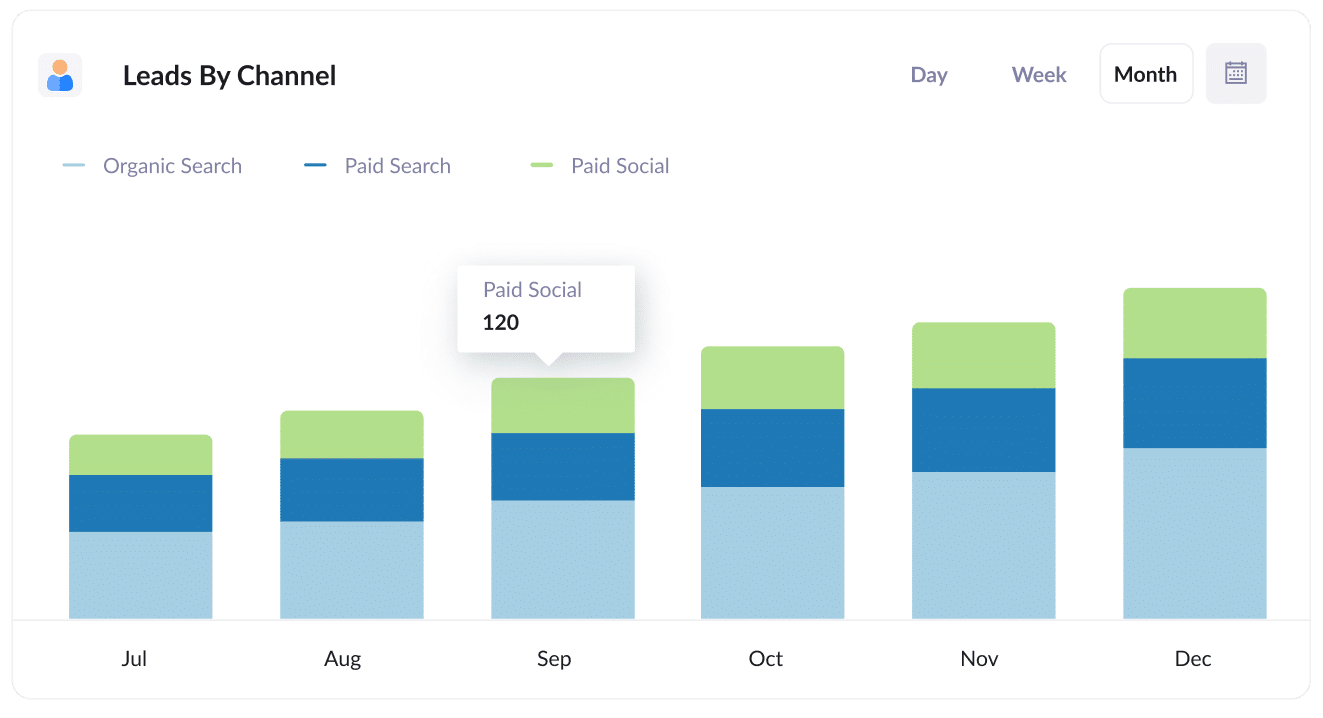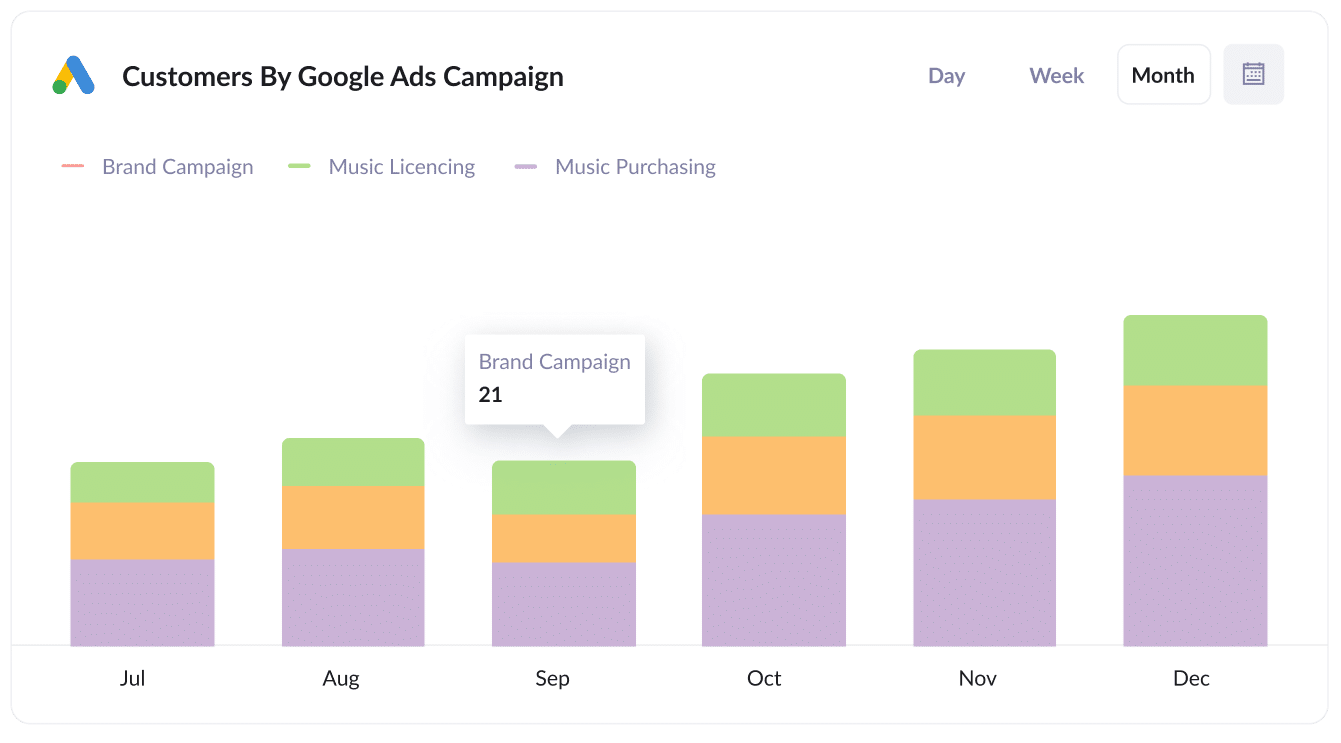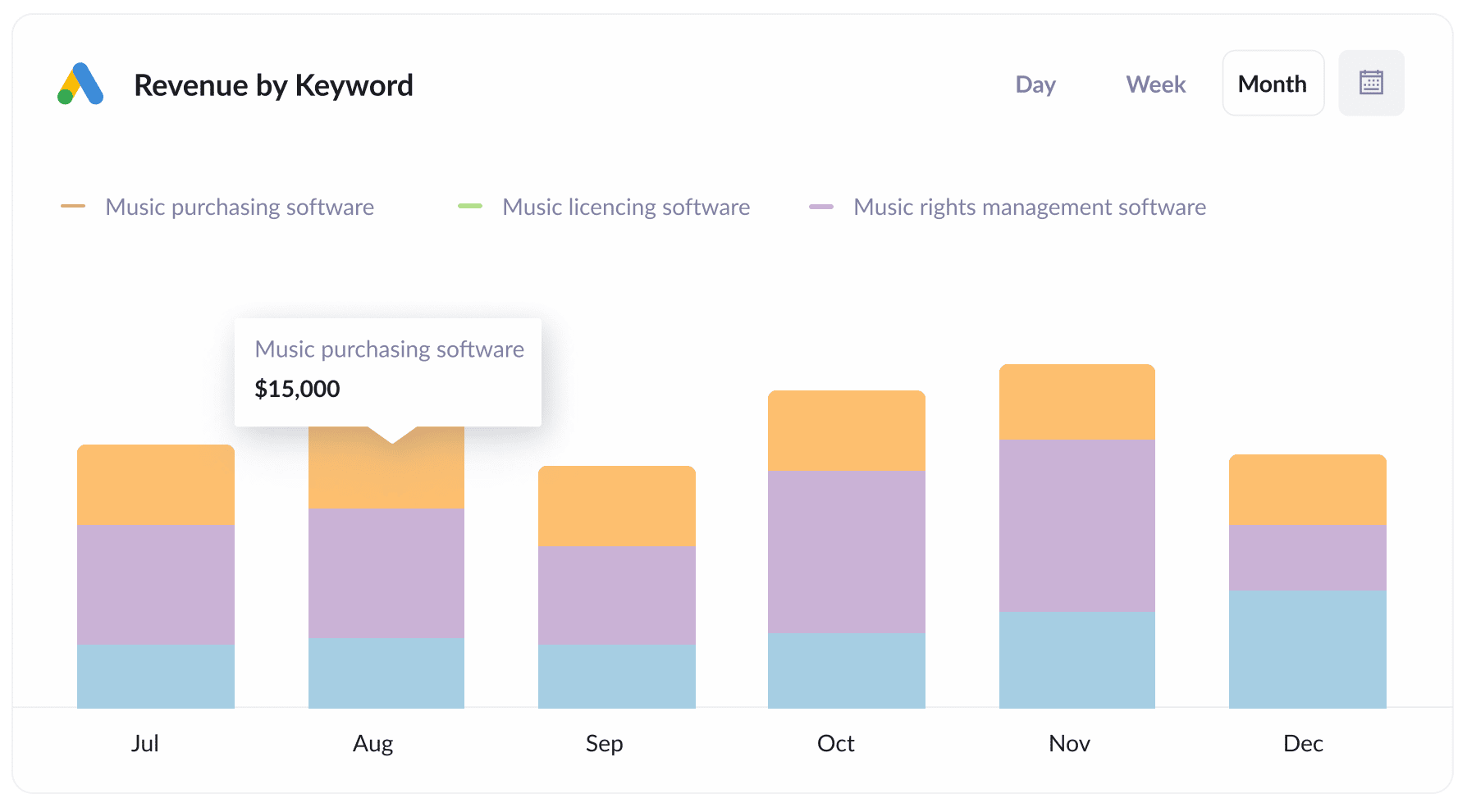How to capture Google Ads data in LiveChat
Learn how to capture Google Ads data with each new LiveChat chat, so you know what campaigns are driving your leads and customers.
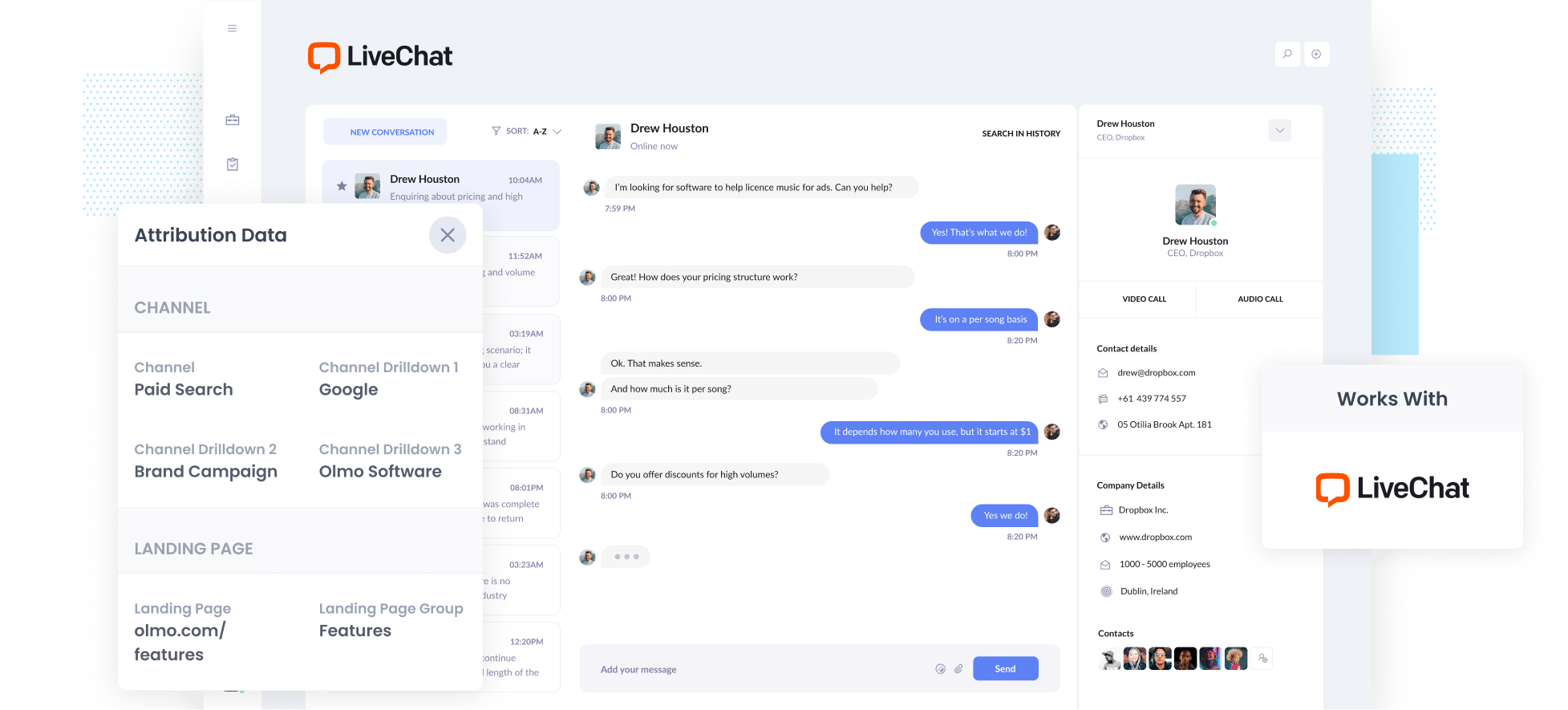
Having trouble figuring out how many leads and customers are coming from your Google Ads?
You’re not alone. While tools like Google Analytics make ti easy to see how many website visitors you're getting, it's historical been much more difficult to track how many leads and customers you're getting.
The good news is there’s a simple fix.
In this article, we’ll walk you through how to use a tool called Attributer to capture Google Ads data in LiveChat. We’ll also share a few example reports you can run to see which campaigns and ads are delivering the most leads and customers for your business.
4 simple steps to capture Google Ads data in LiveChat
Capturing Google Ads data in LiveChat is straightforward with Attributer. Just follow these four simple steps:
1. Add UTM parameters to your ads
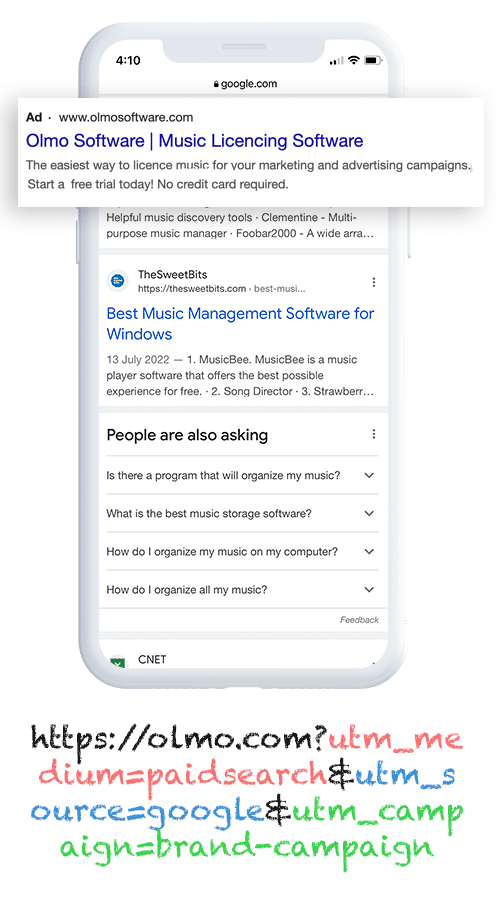
The first step is to add UTM parameters to your ads.
If you are not familiar with them, UTM parameters are short bits of text you attach to the end of the URLs in your ads. They help track where your leads are coming from.
For example, if your original link was attributer.io/integrations/livechat, the version with UTM parameters might look like this:
https://attributer.io/integrations/livechat?utm_medium=paidsearch&utm_source=google&utm_campaign=brand-campaign
What information you put in your UTM parameters is up to you, but this is the format we recommend for Google Ads:
- UTM Medium = Paid search
- UTM Source = Google
- UTM Campaign = The name of your Google Ads campaign
- UTM Term = The name of the ad group the ad belongs to
- UTM Content = The specific ad
2. Install Attributer on your site
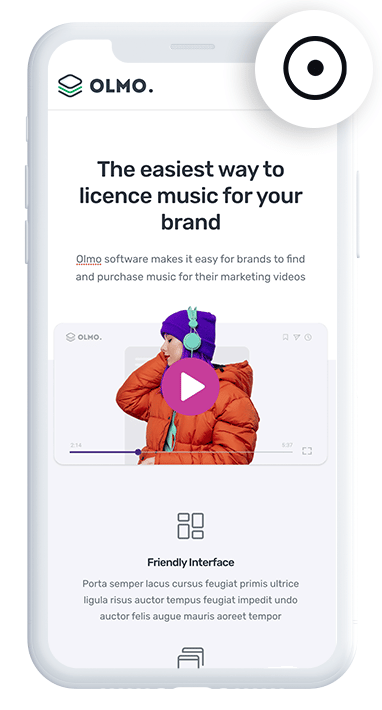
Once you’ve signed up for your 14-day free trial of Attributer, you’ll receive a small snippet of code to place on your website.
Depending on what website builder you are using, you can typically add it via the Settings section of your website.
Alternatively, you can add it via tools like Google Tag Manager as well.
Regardless of which method you choose, it only takes a few minutes to install, and you’ll find step-by-step instructions for most popular website platforms here.
3. Attributer passes through Google Ads data with each chat
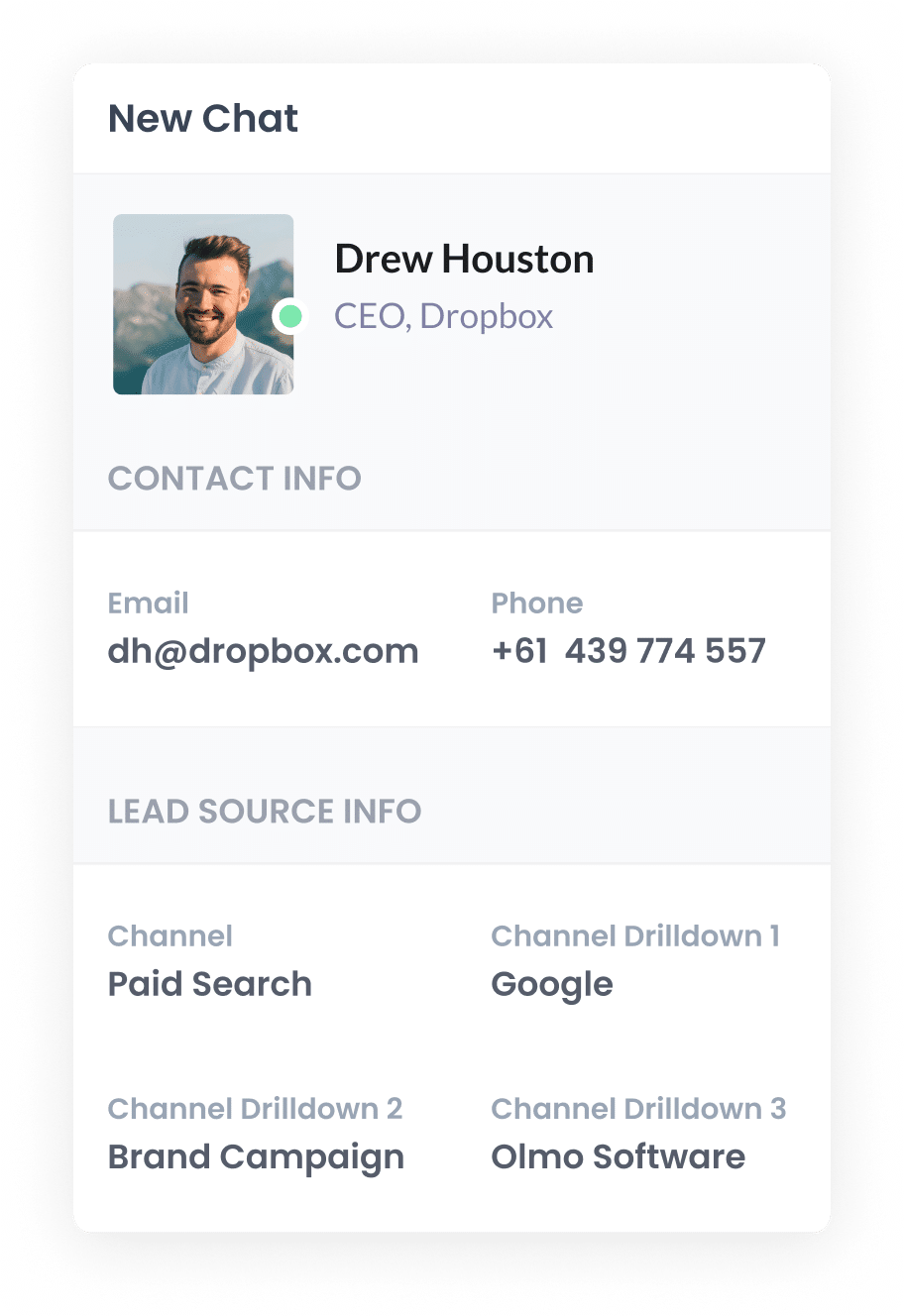
Once everything is set up, Attributer will start tracking where your website visitors are coming from.
Then, when someone starts a chat via the embedded LiveChat wedget on your site, Attributer automatically passes through information on where they came from
For example, imagine you are the marketing manager at a company that builds music licencing software. You're running some Google Ads campaigns and someone clicks your ad and books a demo. Depending on the UTM parameters you added, Attributer would capture and pass through data like this:
- Channel = Paid Search
- Channel Drilldown 1 = Google
- Channel Drilldown 2 = Music Licencing Campaign
- Channel Drilldown 3 = Case Study Ad
4. Google Ads data is captured by LiveChat and can be sent to your CRM and other tools
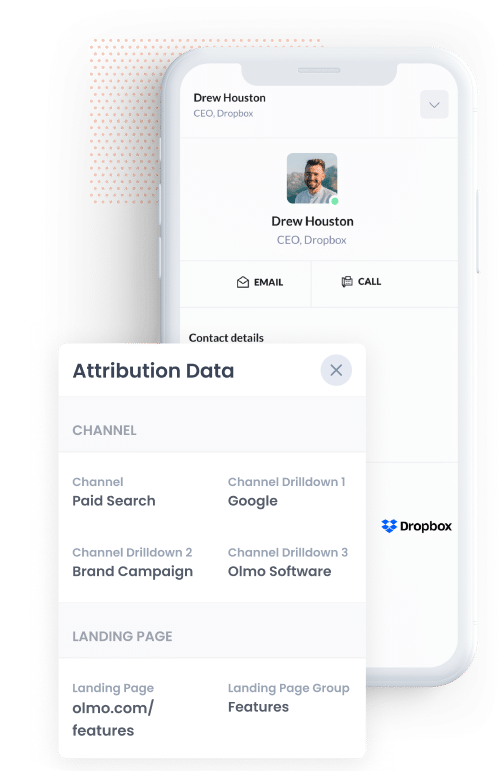
Once the data is captured in LiveChat alongside each meeting booking, you can use it in whatever way works best for your team.
For example, you could:
- View the attribution details alongside the chat in your LiveChat account
- Send the data to your CRM (such as Salesforce, Pipedrive, or HubSpot) and use its reporting features to build charts and dashboards that show how many leads and customers your Google Ads are bringing in.
- Export it to a spreadsheet for a clean, filterable view, or connect it to tools like Google Data Studio for more advanced reporting.
Why using Attributer is the best way to capture Google Ads data in LiveChat
Here’s why Attributer is your best bet for capturing Google Ads data in LiveChat:
1. Captures all traffic
Attributer doesn’t just track leads that come from your Google Ads. It passes through the source of every lead, no matter how they found you.
So whether someone comes through a Facebook Ad, an organic Google search or a post on social media, Attributer tracks where they came from and passes it through when they start a new chat.
This gives you a full picture of where all your leads and customers are coming from, so you can make more informed decisions about where to focus your marketing efforts and budget.
2. Remembers the data as visitors browse your site
Unlike other tools, Attributer remembers the UTM parameters as they browse around your website.
So if a user clicks an ad, lands on your homepage, and then browses around the site a bit before finally starting a chat, the information on where they came from will still be passed through.
This helps ensure you get attribution data on all your leads, and can truly understand what's working and what isn't.
3. Captures landing page data as well
Along with capturing Google Ads data (through the UTM parameters you added to your campaigns), Attributer also records the first page a visitor lands on and the broader section of the site that page belongs to.
As an example, if someone lands on a page like olmosoftware.com/blog/best-music-licencing-software, Attributer will pass through both the full URL (as the landing page) as well as the landing page group (in this case, /blog).
This allows you to run reports that answer questions like 'How many leads am I getting from my blog?' or 'Which blog posts are generating the most leads and customers?'
How Attributer helped Qwilr track the source of all their leads and customers
Qwilr is a software company based in Australia. Their product allows businesses to create sales proposals as beautiful, interactive web pages instead of plain old PDFs.
They use a variety of channels to generate leads. Prospective customers can sign up for a free trial, book a demo with the sales team, start a chat on the website, register for a webinar, and more.
Before Attributer, they had built their own system to track where free trial signups were coming from. But they had no visibility into the source of leads who booked demos, started chats, joined webinars, or took other actions.
That’s where Attributer came in.
With Attributer installed on their site, Qwilr now gets information on where the lead came from, regardless of whether they booked a demo, chatted with the team, or signed up for a webinar. They even replaced the custom solution they bad built for their free trial signups with Attributer.
And now that they have attribution data coming in for ALL their leads, they've been able to use it to optimise their marketing spend.
For instance, Qwilr was running many different types of Google Ads, including search ads, display ads, performance max campaigns, and more. Before Attributer it looked like their display and performance max campaigns were performing best as they were bringing lots of website visitors at a relatively low cost.
But with Attributer they were able to see that barely any of these visitors were converting, and it was actually their search campaigns that were generating the most leads and customers.
So they cut the spend on display and performance max campaigns and focused only on search campaigns, and have been able to generate more leads and customers at a lower cost as a result.
“Attributer gives us clean, structured marketing attribution data across all our various lead sources. It’s helped us know what paid campaigns are working, how certain types of content perform, how our SEO efforts are tracking, and more”

Mark Tanner - Co-Founder & Chief Revenue Officer
Wrap up
If you’ve been looking for a good way to track how many leads and customers you're getting from your Google Ads, Attributer could be exactly what you need.
Plus, Attributer is not limited to just tracking Google Ads. It will also pass through attribution data on leads that come from Facebook Ads, organic searches, social media posts, and more. This gives you a complete view of where your leads and customers are really coming from.
The best part is that getting started is really simple. Attributer offers a 14-day free trial, and setup usually takes less than 10 minutes. Give it a try today!
Get Started For Free
Start your 14-day free trial of Attributer today!

About the Author
Aaron Beashel is the founder of Attributer and has over 15 years of experience in marketing & analytics. He is a recognized expert in the subject and has written articles for leading websites such as Hubspot, Zapier, Search Engine Journal, Buffer, Unbounce & more. Learn more about Aaron here.

